| View previous topic :: View next topic |
| Author |
Message |
Peter Farquhar
Site Admin

Joined: 14 May 2011
Posts: 52
Location: Virginia



|
 Posted: Aug 26, 2023 13:41 Post subject: Re: About cyclic twinning - (5) Posted: Aug 26, 2023 13:41 Post subject: Re: About cyclic twinning - (5) |
|
|
The rutile specimen below (PF-3651) is from Graves Mountain, Georgia, and was once in Rock Currier's collection #3085. This rutile is quite unusual, because it has six sides yet no central cavity.
I am interested in a discussion of whether this rutile specimen exhibits cyclic twinning. Is it appropriate to call this rutile a "sixling"?
| Mineral: | Rutile |
| Locality: | | Graves Mountain, Lincoln County, Georgia, USA |  |
|
| Dimensions: | 1.4 x 1.0 x 0.8cm, 4 grams |
| Description: |
| Unusual six-sided rutile specimen without a central cavity (PF-3651). Ex Rock Currier collection #3085. |
|
| Viewed: |
10782 Time(s) |
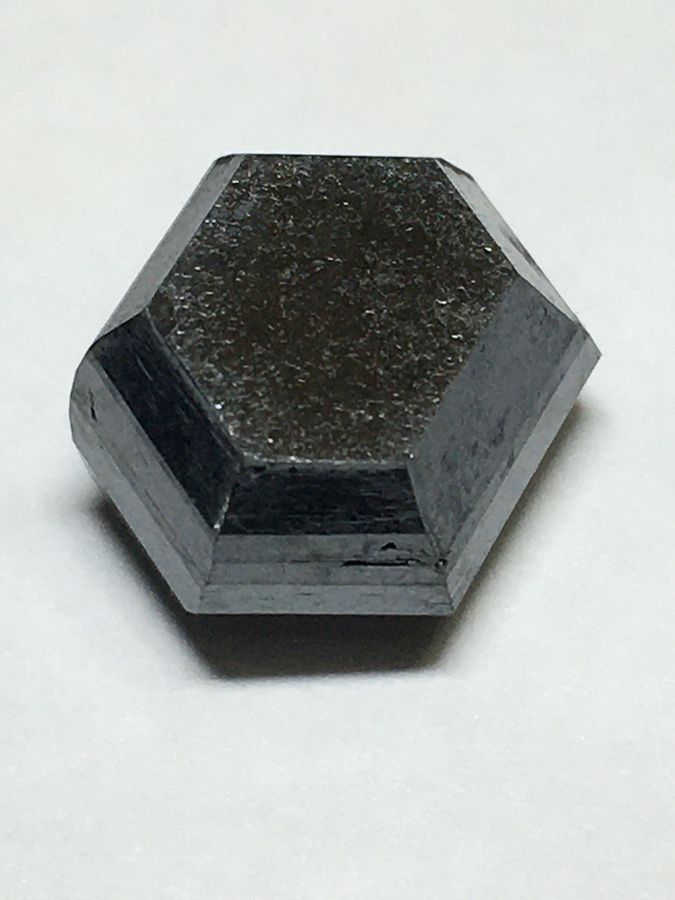
|
| Mineral: | Rutile sixling (idealized drawing) from Graves Mountain, Georgia USA. |
| Description: |
Drawing from G. H. Williams (1890), "Elements of Crystallography," Henry Holt Publishers (New York), p. 198, as reproduced in "Annual Report of the Geological Survey of Arkansas for 1890," vol. 2 (1891), p. 325. Note Williams' use of the term "sixling."
This idealized drawing originally appeared in Professor Gustav Rose's 1862 article, and was attributed to Graves Mountain, not Magnet Cove as Williams reported. |
|
| Viewed: |
10752 Time(s) |
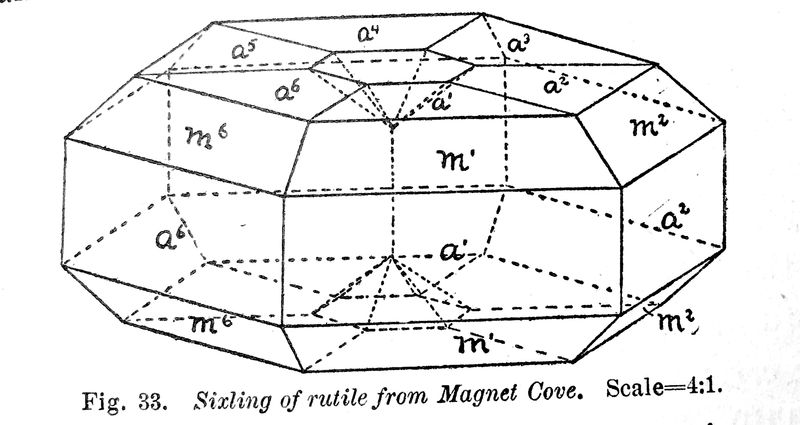
|
|
|
| Back to top |
|
 |
Pete Richards
Site Admin
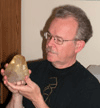
Joined: 29 Dec 2008
Posts: 846
Location: Northeast Ohio



|
 Posted: Aug 27, 2023 13:29 Post subject: Re: About cyclic twinning - (5) Posted: Aug 27, 2023 13:29 Post subject: Re: About cyclic twinning - (5) |
|
|
I am confident that this is a twin, a hexagonal sixling like the drawing. The main difference is that the pits shown in the drawing have been filled in on the actual specimen.
I can imagine distortions to a single prismatic tetragonal crystal that would cause it to look vaguely like a hexagonal plate, but such distortions would seem highly unlikely to occur. For such distortions to produce such a perfect hexagonal plate, with all faces balanced, is beyond credibility.
It might be possible, with careful examination and use of different lighting directions, to make out the twin boundaries between adjacent individuals on the flat plate on top of the twin, on the basis of differences in reflectivity between the two individuals. This is often possible with Graves Mountain twins, especially if their faces are slightly etched, but may not be possible on such a lustrous surface. Use of polarizing filters might help.
The attached photo is of a simple rutile twin from Graves Mountain twinned according to the same law. The flat face corresponds to the hexagonal face in the specimen that is the subject of this post. The parts of the face belonging to the two individuals are illuminated quite differently, in spite of the fact that they are co-planar.
| Mineral: | rutile |
| Locality: | | Graves Mountain, Lincoln County, Georgia, USA |  |
|
| Dimensions: | 2.5 cm wide |
| Description: |
|
| Viewed: |
10690 Time(s) |
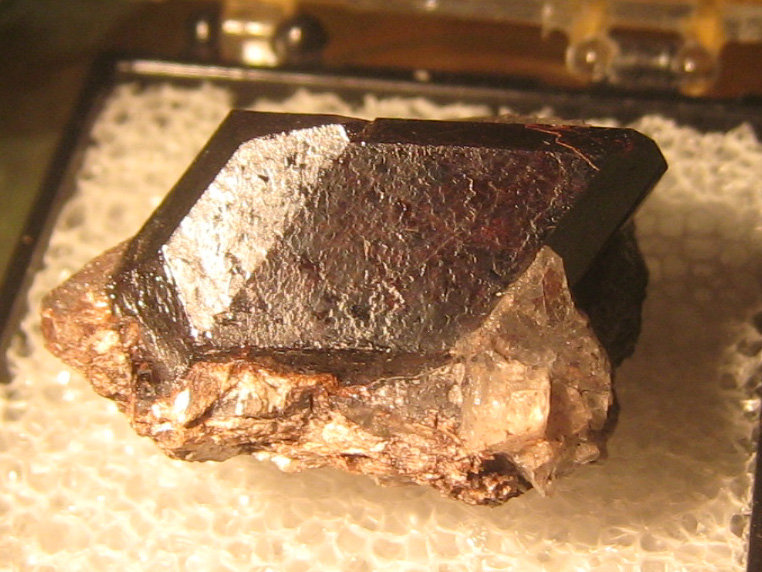
|
_________________
Collecting and studying crystals with interesting habits, twinning, and epitaxy |
|
| Back to top |
|
 |
Bob Morgan
Joined: 18 Jan 2018
Posts: 254
Location: Savannah, Georgia



|
 Posted: Aug 28, 2023 06:38 Post subject: Re: About cyclic twinning - (5) Posted: Aug 28, 2023 06:38 Post subject: Re: About cyclic twinning - (5) |
|
|
I too tried to figure how your rutile would be a single and couldn't find any way that worked. The dimpling indicates fairly strong dissolution. perhaps there was also some redeposition that filled in the center.
In the photo there appeared to be some differences near the outer edges which would also indicate twin boundaries.
|
|
| Back to top |
|
 |
James Catmur
Site Admin

Joined: 14 Sep 2006
Posts: 1489
Location: Cambridge



|
 Posted: Aug 28, 2023 12:51 Post subject: Re: About cyclic twinning - (5) Posted: Aug 28, 2023 12:51 Post subject: Re: About cyclic twinning - (5) |
|
|
It may be me, but I see very faint marks that are where the dimple should be
| Mineral: | Rutile |
| Locality: | | Graves Mountain, Lincoln County, Georgia, USA |  |
|
| Description: |
|
| Viewed: |
10583 Time(s) |
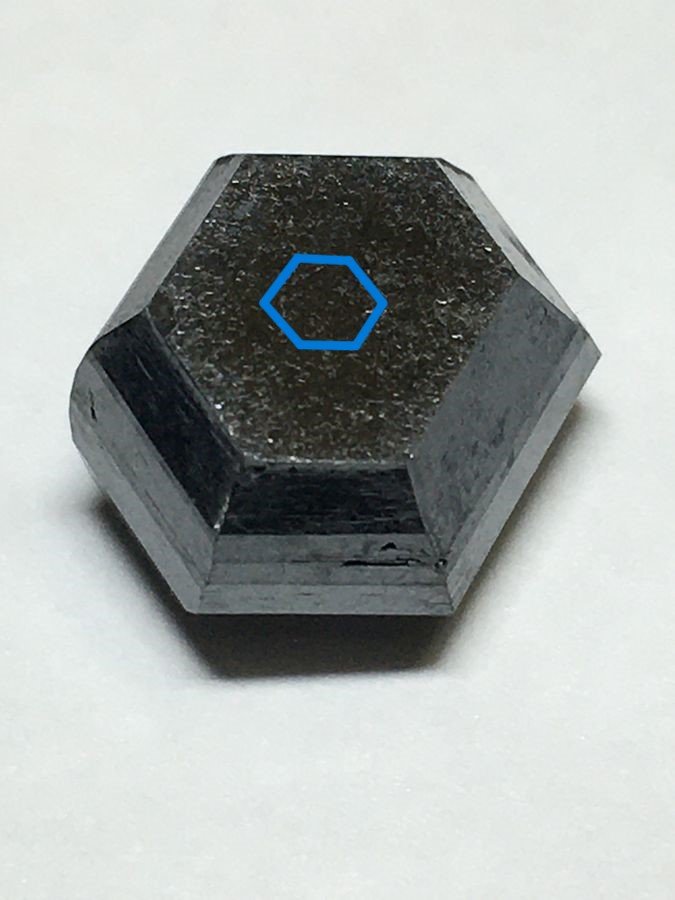
|
|
|
| Back to top |
|
 |
Peter Farquhar
Site Admin

Joined: 14 May 2011
Posts: 52
Location: Virginia



|
 Posted: Aug 29, 2023 14:31 Post subject: Re: About cyclic twinning - (5) Posted: Aug 29, 2023 14:31 Post subject: Re: About cyclic twinning - (5) |
|
|
Based upon the helpful feedback, I carefully examined the top of the rutile specimen again. This time I experimented with different lighting sources, temperatures, and angles; polarizing filters; and 10x, 20x, and 40x stereo magnification. In the end, I could find no evidence of where a central cavity, pit, or dimple might have been.
Using a different camera, I did take another photo of this rutile specimen (PF-3651) in the same orientation. This photo shows a faint scratch not visible in the earlier photo, but otherwise nothing else is revealing. I wish I had capabilities for photographing magnified images of this specimen.
Thanks again for your comments.
| Mineral: | Rutile |
| Locality: | | Graves Mountain, Lincoln County, Georgia, USA |  |
|
| Dimensions: | 1.4 x 1.0 x 0.8cm, 4 grams |
| Description: |
| Second photo of rutile specimen PF-3651 under different lighting conditions than the first photo above. |
|
| Viewed: |
10464 Time(s) |
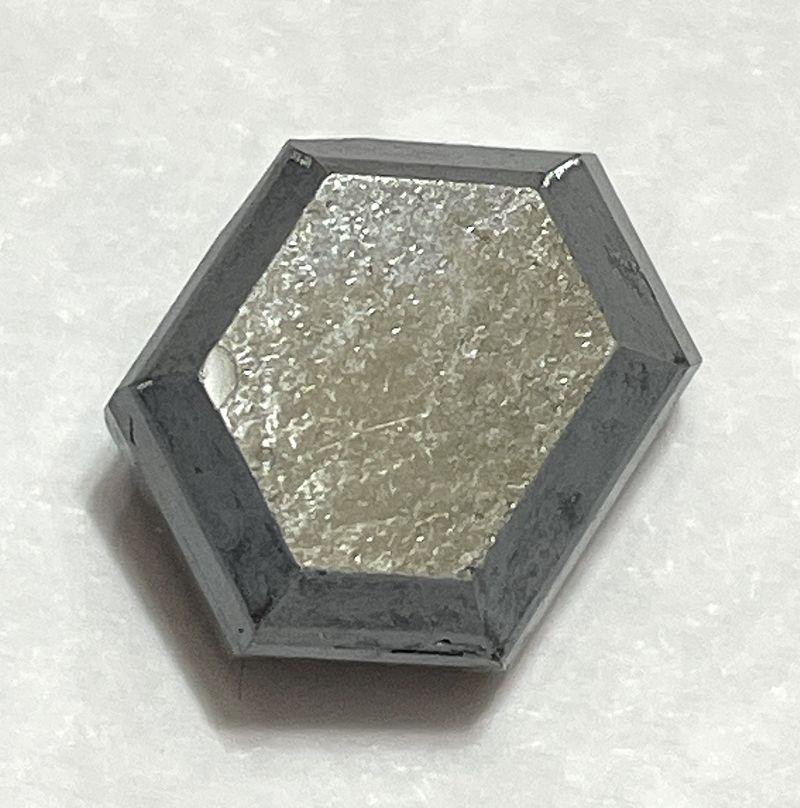
|
|
|
| Back to top |
|
 |
Bob Morgan
Joined: 18 Jan 2018
Posts: 254
Location: Savannah, Georgia



|
 Posted: Aug 29, 2023 16:40 Post subject: Re: About cyclic twinning - (5) Posted: Aug 29, 2023 16:40 Post subject: Re: About cyclic twinning - (5) |
|
|
Examine the outer edges where two crystals meet, like the edge to the upper right. Cyclic twins of rutile often have places where one crystal overlaps the other in ways that don't have similar development on the edges of faces of single crystals.
How about the other side opposite the dimpled surface? If that is a contact surface, perhaps the dissolution would be more likely to fill in the center with redeposition.
Whatever, this is quite special. You and Rock have good taste.
|
|
| Back to top |
|
 |
Pete Richards
Site Admin

Joined: 29 Dec 2008
Posts: 846
Location: Northeast Ohio



|
 Posted: Aug 30, 2023 07:32 Post subject: Re: About cyclic twinning - (5) Posted: Aug 30, 2023 07:32 Post subject: Re: About cyclic twinning - (5) |
|
|
Excellent point, Bob!
_________________
Collecting and studying crystals with interesting habits, twinning, and epitaxy |
|
| Back to top |
|
 |
Peter Farquhar
Site Admin

Joined: 14 May 2011
Posts: 52
Location: Virginia



|
 Posted: Sep 08, 2023 09:38 Post subject: Re: About cyclic twinning - (5) Posted: Sep 08, 2023 09:38 Post subject: Re: About cyclic twinning - (5) |
|
|
Rutile eightlings are found in several localities worldwide, but they are somewhat rare from Graves Mountain. Below is a photo of an unusual rutile eightling (PF-3645 ) on matrix from Graves Mountain, Georgia. This thumbnail specimen was acquired in a trade, and came originally from Neal Pfaff of "M. Phantom Minerals" many years ago.
After studying hundreds of rutile eightlings, I found they all share one distinguishing feature -- the “zig-zag” pattern of twinning (in German, “Zickzack”). The “zig-zag” pattern occurs ideally when the vertices on the rutile’s perimeter alternately lie in one of two parallel planes. I explain the reasoning and history behind this particular definition in a forthcoming paper that introduces a taxonomy for classifying different types of rutile eightlings.
Meanwhile, it is important to note that rutile eightlings are not defined here by the number of sides. In other words, it is possible for a rutile eightling to have more (or fewer) than eight sides (e.g., with aggregations of intergrown twinned crystals). Thus, it is the zig-zag twinning that defines a rutile eightling, not the number of sides per se.
For other examples of zig-zag twinning, see the photo of the rutile eightling (PF-2965) from Graves Mountain posted earlier in this thread, or the photos of any of the eightling rosettes from Magnet Cove also posted here.
| Mineral: | Rutile eightling (PF-3645) |
| Locality: | | Graves Mountain, Lincoln County, Georgia, USA |  |
|
| Dimensions: | Overall 3.0 x 2.7 x 1.8cm. Main crystal 1.6 x 1.4 x 1.3cm. |
| Description: |
| Unusual rutile eightling from Graves Mountain. From Neal Pfaff of M. Phantom Minerals. |
|
| Viewed: |
9548 Time(s) |
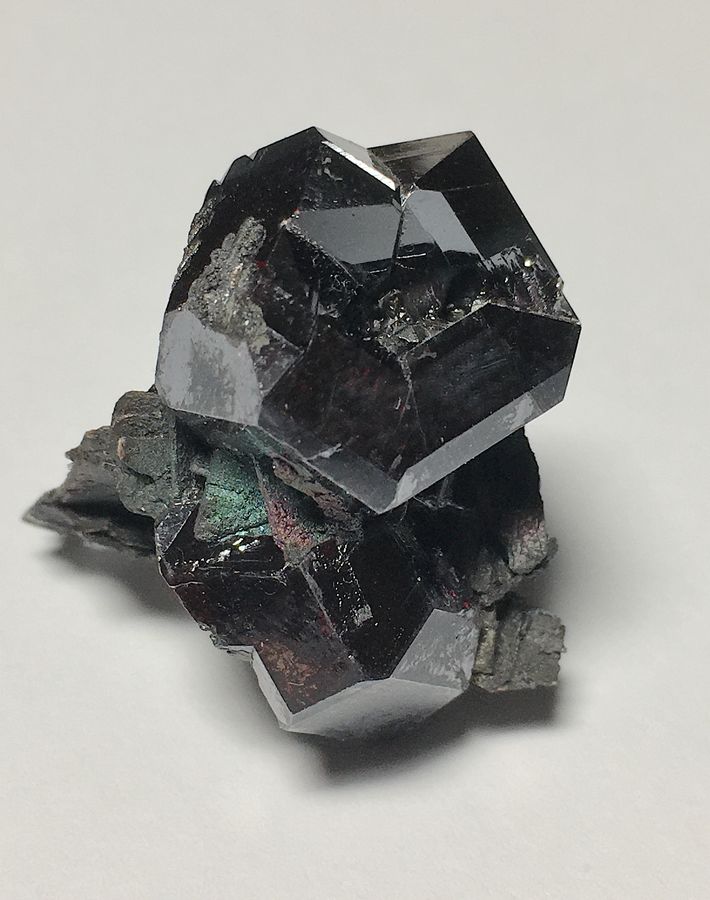
|
|
|
| Back to top |
|
 |
|





